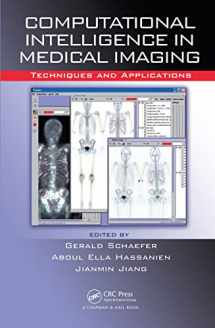
Computational Intelligence in Medical Imaging: Techniques and Applications
Book details
Summary
Description
CI Techniques & Algorithms for a Variety of Medical Imaging Situations
Documents recent advances and stimulates further research
A compilation of the latest trends in the field, Computational Intelligence in Medical Imaging: Techniques and Applications explores how intelligent computing can bring enormous benefit to existing technology in medical image processing as well as improve medical imaging research. The contributors also cover state-of-the-art research toward integrating medical image processing with artificial intelligence and machine learning approaches.
The book presents numerous techniques, algorithms, and models. It describes neural networks, evolutionary optimization techniques, rough sets, support vector machines, tabu search, fuzzy logic, a Bayesian probabilistic framework, a statistical parts-based appearance model, a reinforcement learning-based multistage image segmentation algorithm, a machine learning approach, Monte Carlo simulations, and intelligent, deformable models. The contributors discuss how these techniques are used to classify wound images, extract the boundaries of skin lesions, analyze prostate cancer, handle the inherent uncertainties in mammographic images, and encapsulate the natural intersubject anatomical variance in medical images. They also examine prostate segmentation in transrectal ultrasound images, automatic segmentation and diagnosis of bone scintigraphy, 3-D medical image segmentation, and the reconstruction of SPECT and PET tomographic images.


We would LOVE it if you could help us and other readers by reviewing the book
Book review



